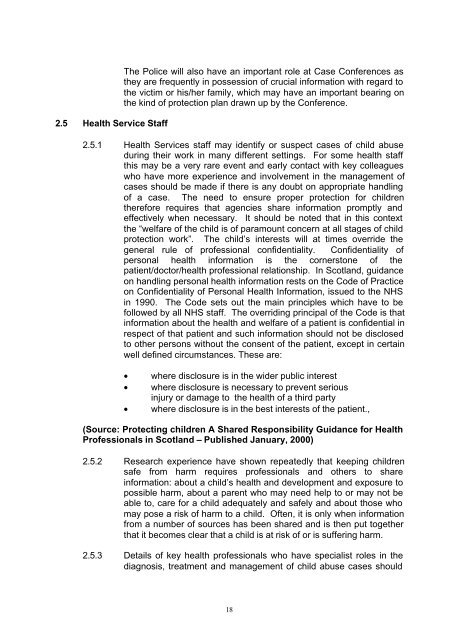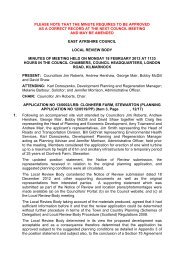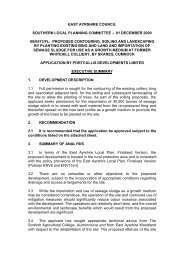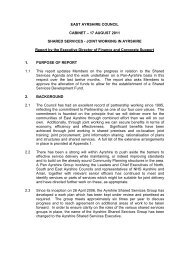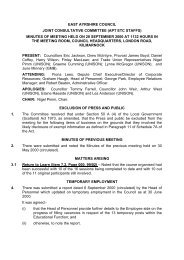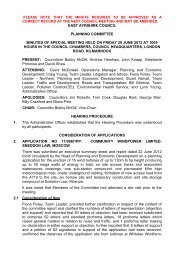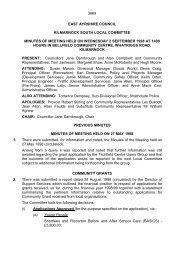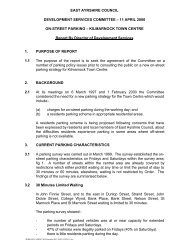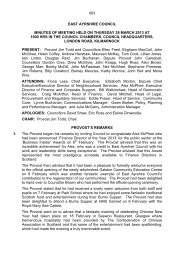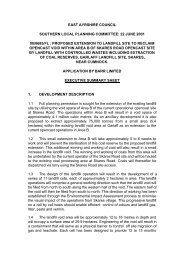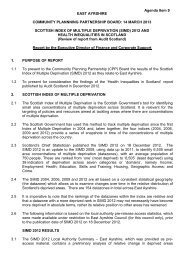Child Protection Procedures - East Ayrshire Council
Child Protection Procedures - East Ayrshire Council
Child Protection Procedures - East Ayrshire Council
Create successful ePaper yourself
Turn your PDF publications into a flip-book with our unique Google optimized e-Paper software.
2.5 Health Service Staff<br />
The Police will also have an important role at Case Conferences as<br />
they are frequently in possession of crucial information with regard to<br />
the victim or his/her family, which may have an important bearing on<br />
the kind of protection plan drawn up by the Conference.<br />
2.5.1 Health Services staff may identify or suspect cases of child abuse<br />
during their work in many different settings. For some health staff<br />
this may be a very rare event and early contact with key colleagues<br />
who have more experience and involvement in the management of<br />
cases should be made if there is any doubt on appropriate handling<br />
of a case. The need to ensure proper protection for children<br />
therefore requires that agencies share information promptly and<br />
effectively when necessary. It should be noted that in this context<br />
the “welfare of the child is of paramount concern at all stages of child<br />
protection work”. The child’s interests will at times override the<br />
general rule of professional confidentiality. Confidentiality of<br />
personal health information is the cornerstone of the<br />
patient/doctor/health professional relationship. In Scotland, guidance<br />
on handling personal health information rests on the Code of Practice<br />
on Confidentiality of Personal Health Information, issued to the NHS<br />
in 1990. The Code sets out the main principles which have to be<br />
followed by all NHS staff. The overriding principal of the Code is that<br />
information about the health and welfare of a patient is confidential in<br />
respect of that patient and such information should not be disclosed<br />
to other persons without the consent of the patient, except in certain<br />
well defined circumstances. These are:<br />
• where disclosure is in the wider public interest<br />
• where disclosure is necessary to prevent serious<br />
injury or damage to the health of a third party<br />
• where disclosure is in the best interests of the patient.,<br />
(Source: Protecting children A Shared Responsibility Guidance for Health<br />
Professionals in Scotland – Published January, 2000)<br />
2.5.2 Research experience have shown repeatedly that keeping children<br />
safe from harm requires professionals and others to share<br />
information: about a child’s health and development and exposure to<br />
possible harm, about a parent who may need help to or may not be<br />
able to, care for a child adequately and safely and about those who<br />
may pose a risk of harm to a child. Often, it is only when information<br />
from a number of sources has been shared and is then put together<br />
that it becomes clear that a child is at risk of or is suffering harm.<br />
2.5.3 Details of key health professionals who have specialist roles in the<br />
diagnosis, treatment and management of child abuse cases should<br />
18


